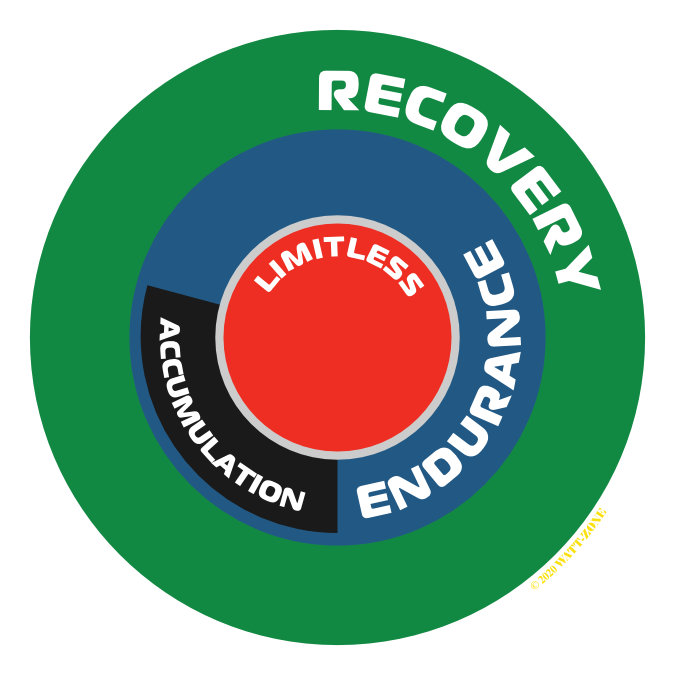
It may sound too simple but there are only four REAL Rides a cyclist can do: Recovery, Endurance, Accumulation, and Limitless Rides. Acknowledging the four REAL Rides helps a cyclist focus on the purpose of each ride they perform, and plan training more effectively. To reach one’s full potential, a cyclist needs to include all of the four REAL Rides into their training.
When heading out on a ride, a cyclist should have no doubt, what the exact purpose of their ride is, and stick to it. It’s all too common to start out doing one type of ride and it ends up morphing into a completely different type of ride. Without a doubt, adhering to a Ride type and its specific goals will ultimately lead to improved performance.
Following is a brief description of each of the REAL Rides. Firstly we will look at Limitless Rides.
LIMITLESS
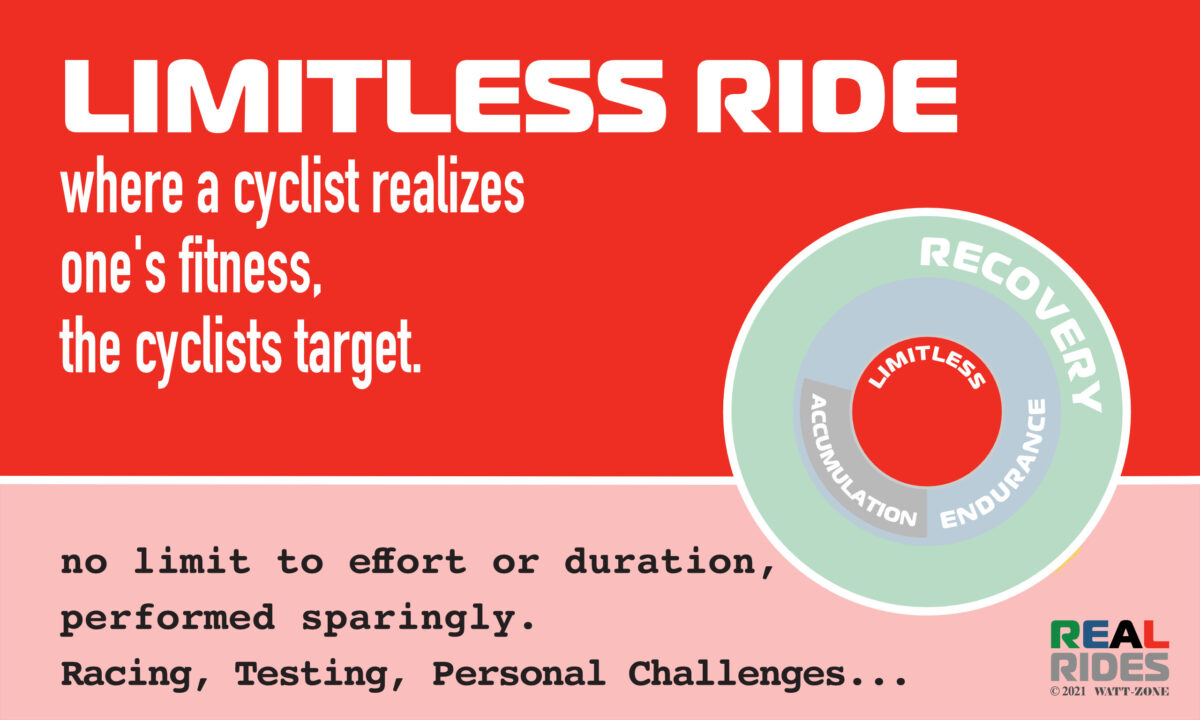
Limitless Rides represent a cyclist’s target. The reason a cyclist rides. They are not training rides. Not surprisingly, they are depicted by a red circle in the center of the REAL Rides diagram. Limitless Rides are so-called because they have no limit to effort {intensity}, duration {time} or both. Rides where a cyclist’s adaptations to training and limits of fitness are exposed.
Limitless rides can take many forms:
- race/event
- personal challenges
- group rides (the one’s that are like racing)
- an epic day out
- an unrestricted ride (smash every hill, sprint every traffic light, chase cars)
- testing (vo2Max, FTP, Hour Test, etc)
Cyclists generally train with a target in mind, a race, event, or personal challenge, and complete testing and B races/events along the way. When undertaking one of these rides one is not training, but pushing the limits of one’s fitness. We call this realizing one’s fitness. Where you find out what you are capable of and indeed what you can’t do.
You can read more about Limitless rides HERE.
Recovery, Endurance, and Accumulation Rides are similar, as they are all limited by effort and time. These rides really represent the training portion of one’s cycling and the majority of a cyclist’s riding.
RECOVERY RIDE
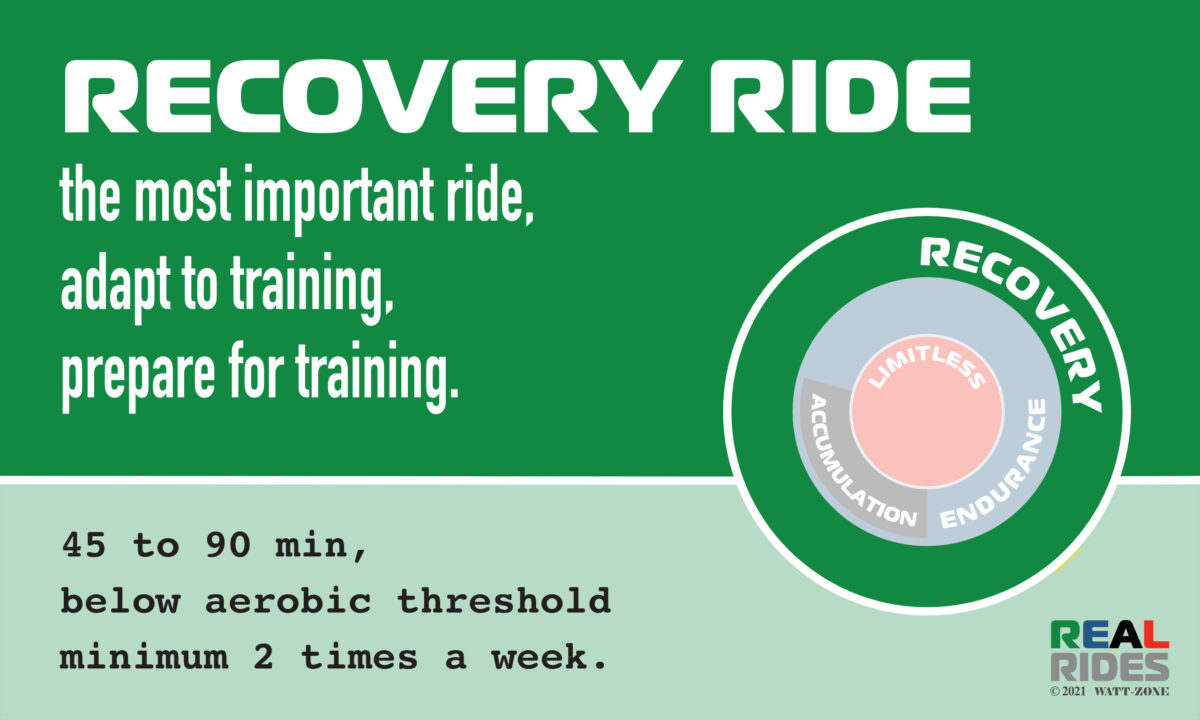
The Recovery ride is the most important ride a cyclist can do. Recovery Rides have two important roles:
- prepare the body for future training, and
- facilitate adaption to training.
Firstly, a cyclist needs to be in a recovered state before undertaking Endurance, Accumulation, and Limitless Rides. There is no reason to attempt these Rides if your body is not fresh enough to perform them appropriately. Performing them fatigued will only result in sub-optimal performance, and potentially lead to over-reaching or over-training.
Secondly, after Endurance, Accumulation, and Limitless Rides have been performed it is essential to follow up with Recovery Rides. Recovery rides are not just about giving the body a chance to prepare for future training, they help stimulate adaptions to the training one has completed. If a cyclist never takes the time to recover, they will more than likely never achieve all the possible adaptations. Eventually their fitness level will stagnate. In the worst situations, it will even deteriorate.
Recovery Rides are usually take the following form:
- 45 to 90 minutes long,
- low effort, below aerobic threshold and
- completed a minimum of 2 times per week.
You can read more about them HERE.
ENDURANCE RIDE
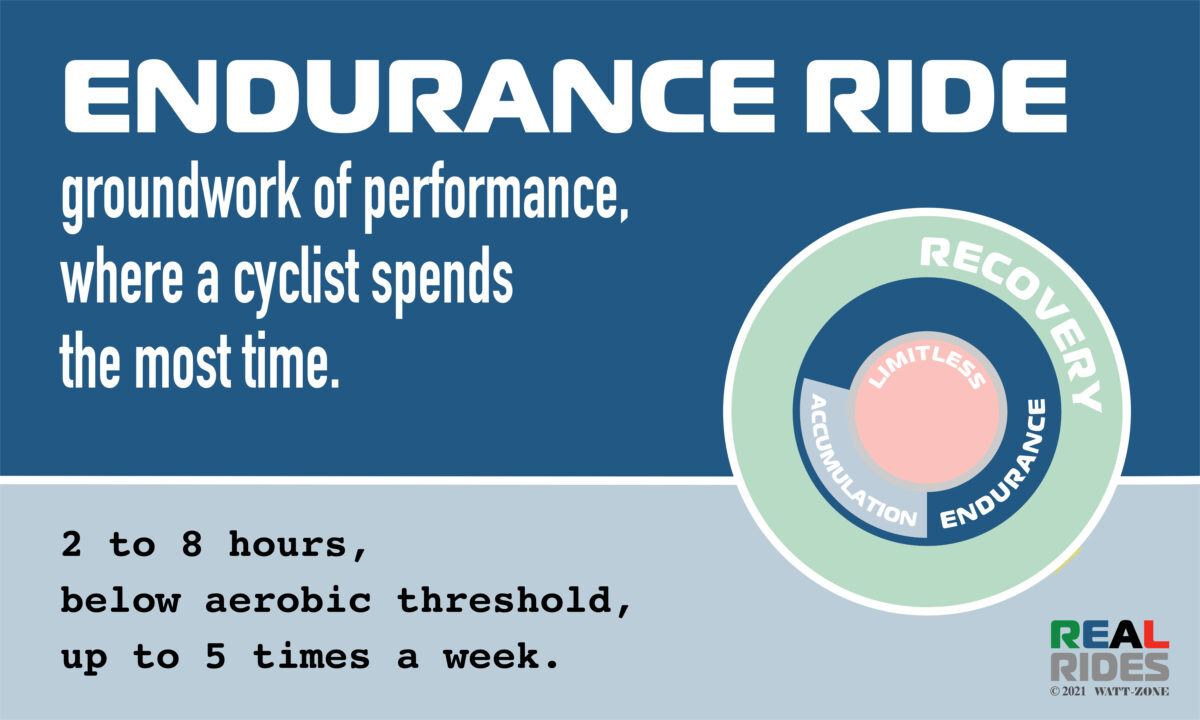
The Endurance Ride is the groundwork for supporting all aspects of a cyclist’s performance. Following Recovery, Endurance rides are the 2nd most important of the REAL Rides and where a cyclist spends the majority of their training time.
Endurance rides provide physiological adaptions that support performance at all ranges of intensity bar the shortest sprint efforts. Specifically, Endurance Rides: increase the number of capillaries, the number and size of mitochondria in the trained muscles, and the volume of aerobic enzymes. Furthermore, these adaptations combine to enhance the trained muscle’s oxidative capacity, escalating the cyclist’s potential. Obviously, all cyclists want this!
Undoubtedly, Endurance Rides should be part of a cyclist’s training all year round. Endurance Rides take the following form:
- long, a minimum of 2, and up to 8 hours,
- limited by effort, below one’s aerobic threshold,
- comprise the majority of a cyclists training time, and
- completed up to 5 times per week.
You can read more about them HERE.
ACCUMULATION RIDE
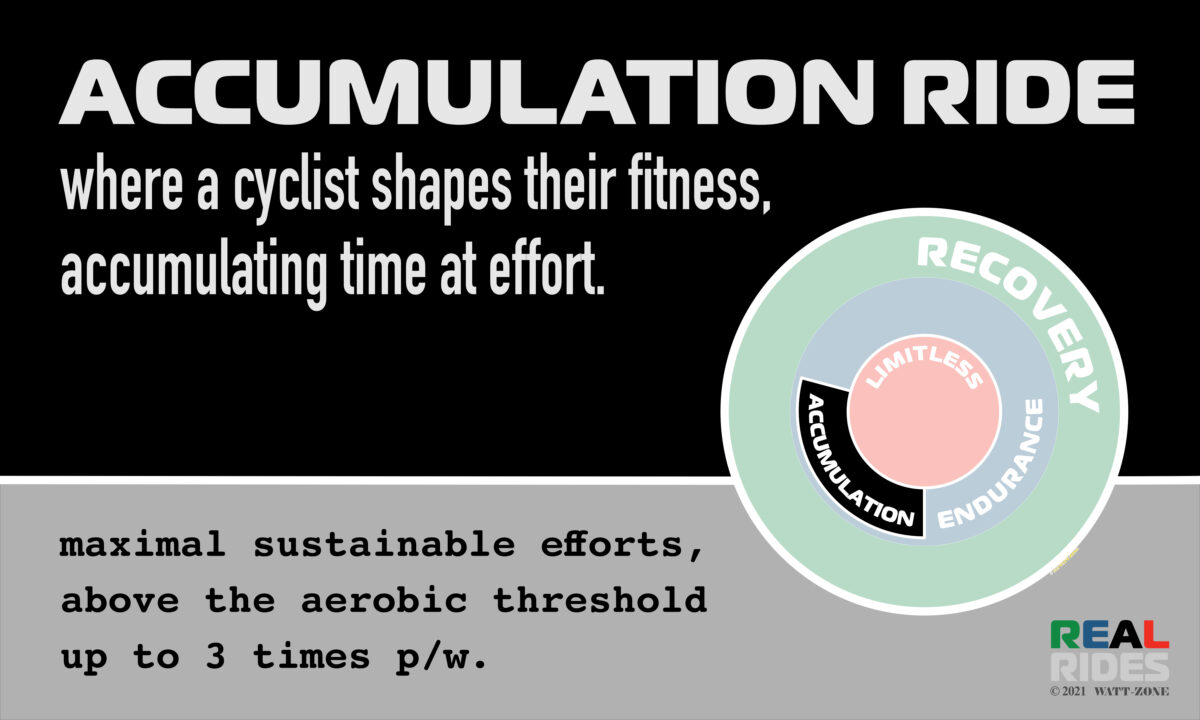
An Accumulation Ride is simply where you accumulate time at Effort. Where Effort is described as exercising above the Aerobic-Threshold. An Accumulation ride is where you train for critical efforts and improving key physiological marks. It is where a cyclist shapes their fitness.
Accumulation is similar to interval training. However, the focus is the accumulated time at Effort. A cyclist will manipulate the length of an athlete’s endurance ride from week to week. Accumulation should also be managed in a similar fashion. Accordingly, the time spent at Effort should be tallied. And subsequently, manipulated from week to week in order to reach one’s training goals.
Accumulation Rides should take the following form:
- Efforts should be performed at a Maximum Repeatable Intensity
- Above the Aerobic-Threshold
- Up to 3 sessions per week
You can read more about them HERE.

The Four REAL Rides: Summary
The Four REAL Rides a cyclist can do concept, is simply a useful tool for ensuring a cyclist’s rides are always purposeful. Clearly knowing you are performing a Recovery, Endurance, Accumulation, or Limitless Ride, and the reason for doing the ride, will without a doubt lead to better adherence and execution of the Ride. Ultimately this will lead to improved performance.
Including all of the Four Rides into a training plan is necessary to reach one’s full potential. The number of each type of ride per week and their juxtaposition is dependent on the cyclist’s periodization. Watt-Zone will address periodization in the future.
Knowledge of the Four Rides gives a rider the ability to make smart training decisions. Improve your riding by learning more about the different rides with the following links:
